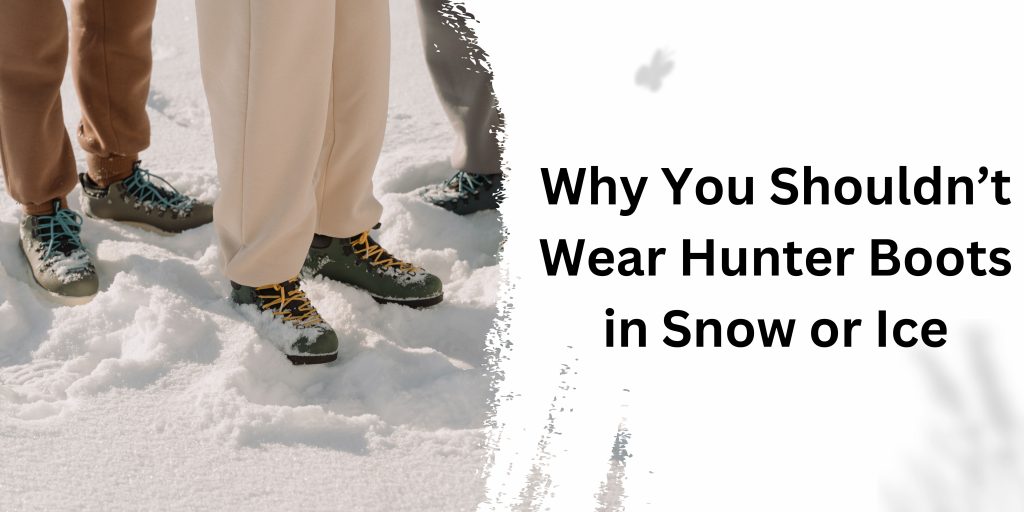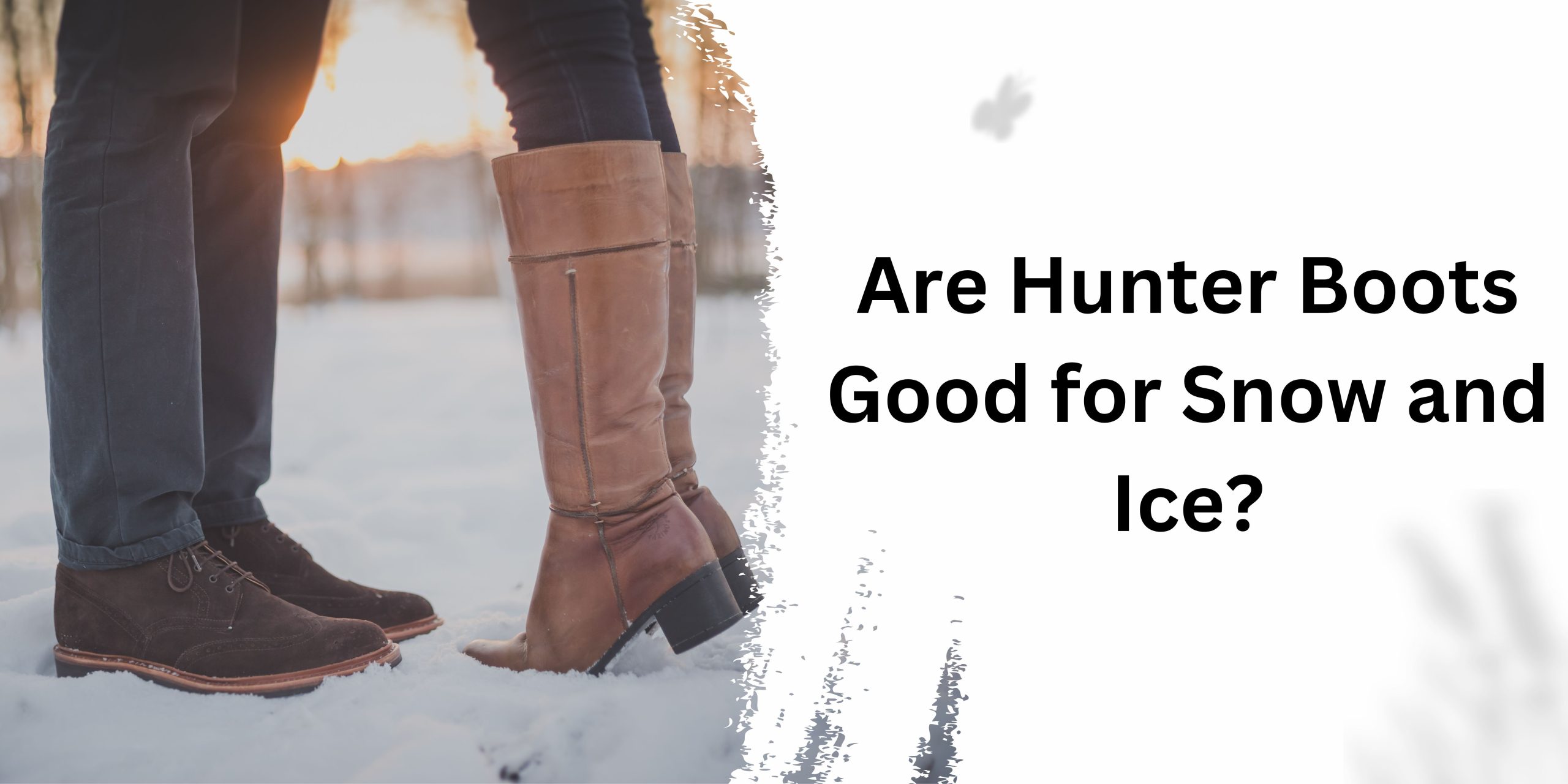Imagine this: a serene winter wonderland, a pristine blanket of snow covering the landscape. You decide to venture out, equipped with your trusty Hunter boots, only to find yourself slipping and sliding like a penguin on an ice rink. Are Hunter boots good for snow and ice, or are they better suited for the catwalk than the winter walk? Let’s dig into the nitty-gritty of these iconic boots and unravel the truth.
Hunter Boots Aren’t Designed for Snow and Ice
When it comes to battling the elements, Hunter boots are undeniably stylish and waterproof, making them a staple in many wardrobes. However, the harsh reality is that they are not explicitly designed for tackling snow and ice. The iconic rubber construction and tall design might shield you from rain puddles, but they offer minimal insulation and traction on slippery surfaces.
Wearing Hunter boots in snowy or icy conditions is akin to bringing a knife to a snowball fight. The smooth sole lacks the grip needed to navigate icy sidewalks or snowy trails, turning a simple stroll into an unintended ice dance. Trust me; you don’t want to test your balance in these circumstances.
The Anatomy of Hunter Boots
To understand why Hunter boots fall short in the snow and ice department, let’s dissect their anatomy. The rubber sole, while fantastic for repelling water, lacks the specialized treads and insulation found in dedicated winter boots. The absence of proper insulation means your feet might as well be on a chilly holiday of their own, far removed from the warmth they deserve.
Additionally, the tall design that protects you from rainwater becomes a hindrance when trekking through snow. Instead of nimble, agile steps, you’ll find yourself wading through drifts with all the grace of a giraffe on roller skates.
Why You Shouldn’t Wear Hunter Boots in Snow or Ice

Now, you might be wondering, why not just slip on an extra pair of thick socks and soldier on? Well, my adventurous friend, it’s not that simple. Hunter boots, with their sleek, fashion-forward design, lack the necessary insulation to keep your feet cozy in frigid temperatures. Those cozy-looking snowdrifts will quickly turn into a frosty ordeal for your toes.
The Cold Truth About Hunter Boots
Winter is not the time for compromising on warmth. Hunter boots, with their focus on style and waterproofing, sacrifice insulation. As a result, your feet become vulnerable to the biting cold, turning your winter escapade into a chilly misadventure.
Moreover, the lack of proper traction can lead to unexpected slips and falls. Imagine navigating an icy path with the grace of a newborn deer—sounds amusing until you’re the one doing the slippery tango.
The Fashion vs. Function Dilemma
Hunter boots have undoubtedly become a fashion statement, gracing runways and city streets alike. However, when it comes to functionality in extreme winter conditions, they leave much to be desired. It’s a classic case of choosing between looking chic or staying warm and safe—a dilemma that every winter warrior faces.
How to Turn Your Hunter Boots Into a Workable Pair of Snow Boots
Fear not, for all is not lost! If you’re determined to make your Hunter boots winter-worthy, a few hacks can help transform them into a more formidable foe against snow and ice.
1. Add Traction with Aftermarket Soles
Invest in aftermarket soles with specialized treads designed for icy terrains. These can be easily attached to your Hunter boots, providing the grip needed to navigate slippery surfaces without compromising on style.
2. Layer Up with Insulating Insoles
Combat the cold by adding insulating insoles to your Hunter boots. These nifty inserts can significantly improve the warmth factor, ensuring your feet stay snug even in sub-zero temperatures.
3. Wear Thermal Socks
Don’t underestimate the power of good socks. Opt for thermal or woollen socks to trap the heat and keep your feet toasty. It’s like giving your Hunter boots a cozy winter blanket.
4. Embrace the Art of Layering
Just as you layer your clothing for warmth, consider layering your footwear. Adding a pair of waterproof booties over your Hunter boots can provide an extra barrier against the elements.
5. Stay Mindful of Snow Depth
When braving deep snow, tuck your pants into your boots to prevent snow from entering. It’s a simple yet effective way to keep your feet dry and warm.
Read More: How to Fix Hunter Boots Crack Repair?
Summary
While Hunter boots are iconic in the fashion realm and adept at repelling rain, they fall short when it comes to tackling snow and ice. The lack of insulation and traction makes them ill-suited for winter adventures. However, with a bit of creativity and the right accessories, you can enhance their functionality and turn them into a winter-ready fashion statement.







